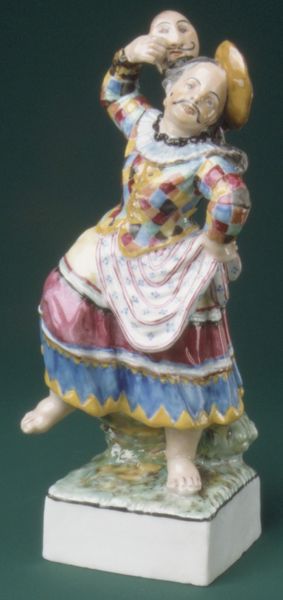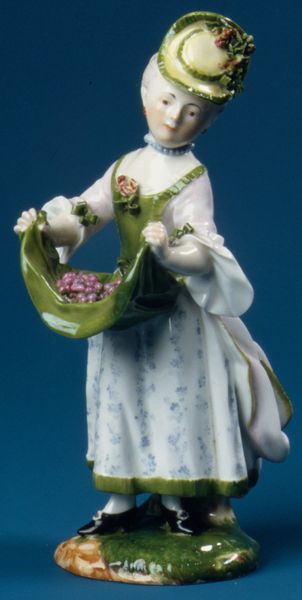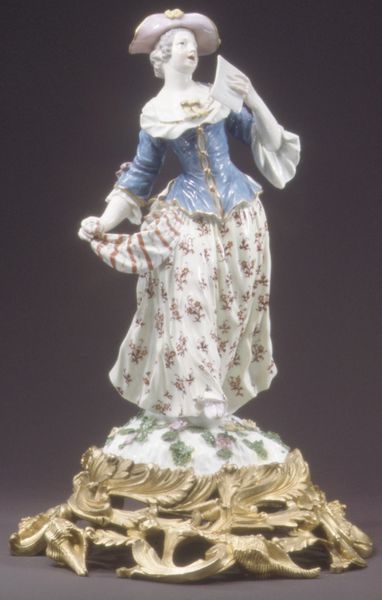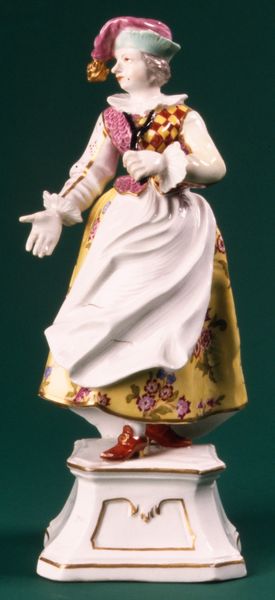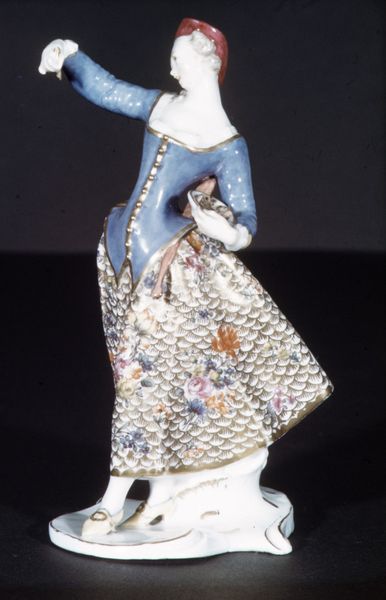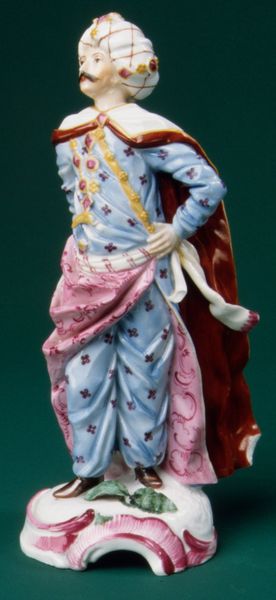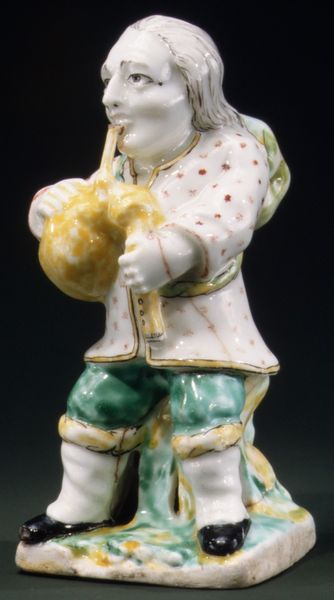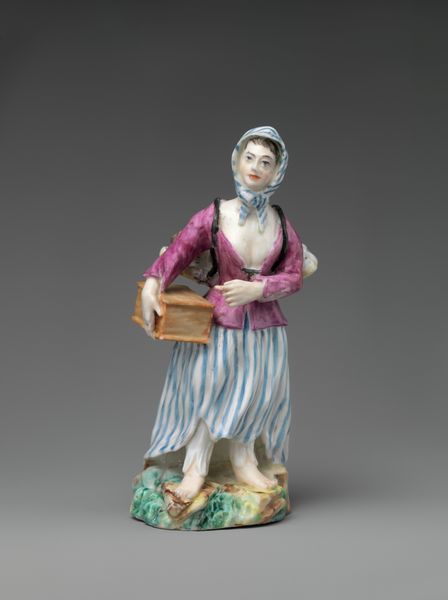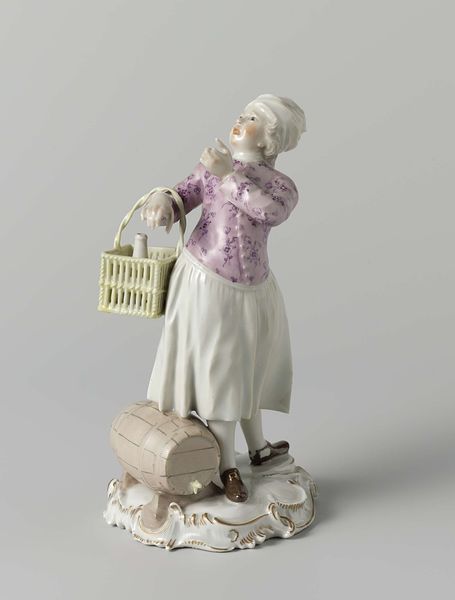
ceramic, porcelain, sculpture
#
ceramic
#
flower
#
porcelain
#
figuration
#
sculpture
#
decorative-art
#
rococo
Dimensions: Height: 8 in. (20.3 cm)
Copyright: Public Domain
Curator: Here we have an earthenware figure, “Flower Seller,” crafted between 1740 and 1755, now residing at the Metropolitan Museum of Art. Isn't it lovely? Editor: Yes, the figure possesses a quaintness with a hint of underlying artificiality. She is presenting flowers that appear less natural than constructed, decorative almost. Curator: These kinds of porcelain figures really exploded in popularity amongst the bourgeoisie during that period, part of a wider culture of collecting small, ornate objects which represented good taste and refined sensitivity. Editor: The use of porcelain as material suggests a desire to imitate something precious while hinting at labor processes from specific porcelain workshops, what could be accessed within a particular economy of production and exchange? Curator: That’s insightful! She's situated between these constraints of gender and labour within Rococo society but the skill in crafting each tiny floral detail of her dress, her kerchief… It's quite remarkable, it places her within a set of material practices too. Editor: And what do the flowers signify in that exchange? The means of production, access to decorative and consumer objects—all point to what it represented within 18th-century marketplaces. How might its perception shift depending on the vendor or purchaser? Curator: Absolutely, her role speaks to the gendered division of labor and class distinctions. Someone's economic privilege is being displayed here, it serves to communicate very distinct ideas about consumption, display and womanhood, too. Editor: I wonder about the labor that went into its creation, the firing and glazing. It speaks to its purpose: not a depiction of reality, but an emblem of a world consumed by display. I wonder about who made this figure, the conditions of labour within these porcelain workshops? Curator: By viewing her through a feminist lens and thinking about the socio-economic dynamics inherent in 18th-century culture, the flower seller tells an unexpected story about labour, privilege and class, doesn’t she? Editor: I agree. Through the analysis of its material history, the ‘Flower Seller’ encapsulates labor processes and commodity exchange specific to its historical moment and its lasting presence within current aesthetic discourse.
Comments
No comments
Be the first to comment and join the conversation on the ultimate creative platform.
